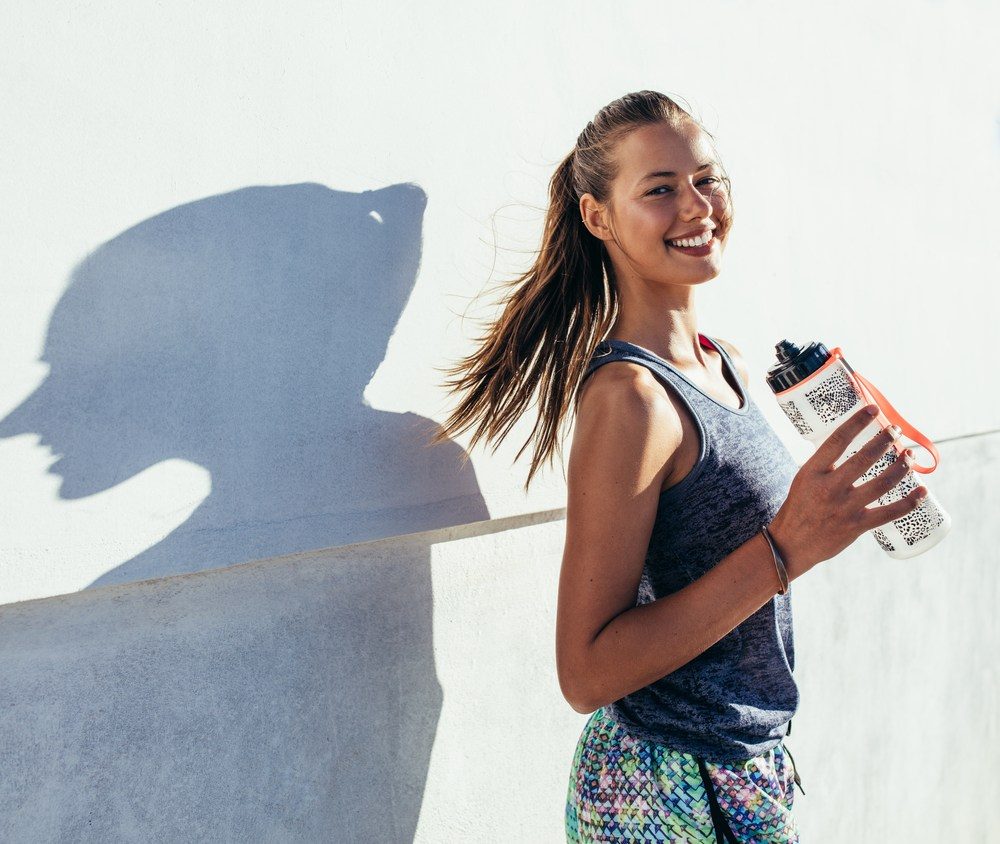
If you have reached a plateau in muscle building or bulking, it’s time to check if you are working on these exercises focused on improving endurance, stamina, strength, and flexibility.
Front Squat: Grasp barbell from rack or clean barbell from floor with overhand open grip, slightly wider than shoulder-width. Position barbell chest high with back arched. Place bar in front of shoulders with elbows placed forward as high as possible and finger underbar to each side With heels hip-width or slightly wider, position feet outward at approximately 45°. Descend until knees and hips are fully bent or until thighs are just past parallel to the floor. Knees travel outward in direction of toes. Extend knees and hips until legs are straight. Return and repeat.
Press: Take the empty bar out of the rack and take one step back. The bar should rest on your shoulders with your elbows slightly in front of the bar. This is an important detail, since if the elbows are behind the bar, you will drive it forward away from you on the way up. Your flexibility may not permit a good position at first, and the bar may not want to sit down on your shoulders properly, but flexibility will come with time and a proper press can be done as long as the elbows are in front of the bar. Look straight ahead to a point on the wall level with your eyes and lift your chest. This is accomplished with the muscles of the upper back and can be thought of as raising your sternum up to your chin. Take a big breath, hold it, and drive the bar up over your head. Make sure that your bar is over your neck, the highest point on your skull, right over your ears. This is where the bar must be if it is to be locked out in balance with your spine in normal anatomical position. This is the position the bar is going to be at the end of every correct rep. From your correct starting position, lean back very slightly and drive the bar up, keeping it in as close as possible to your face. As soon as the bar passes the top of your head, get under it. Move your body forward under the bar and use this motion to help lock the bar out at the top. Don’t move the bar back, move your body forward. When this is done correctly, the forward movement of the body helps straighten out the shoulder, which helps drive up the elbow into lockout. There will be a small amount of lateral movement involved in getting the bar from a position in front of the neck to a point over the ears. This distance should be made up with the forward movement of the body, not the backward movement of the bar. Pushing the bar back instead of up is inefficient and misses the opportunity to leverage the elbows into extension with the powerful hip extensors working through a properly rigid torso. Abdominal, low back, and hip strength—“core” stability—make this possible, and make pressing an incredibly effective core exercise. Start with the empty bar and do a set of five. Add a little weight—20 or 30 pounds if you are a regular trainer—and go up doing sets of five until the bar speed starts to slow. Stay there and do two more sets.
Push Press: Grasp barbell from rack or clean barbell from floor with overhand grip, slightly wider than shoulder width. Position bar chest high with torso tight. Retract head back. Dip body by bending knees, hips and ankles slightly. Explosively drive upward with legs, driving barbell up off shoulders, vigorously extending arms overhead. Return to shoulders and repeat.
Plank: Start by getting into a press up position. Lower both your forearms to the ground so that both your elbows and fists are flat to the ground. Your palms should be balled up, and directly underneath your shoulders. Curl your toes under and engage your abs by tilting your pelvis and pulling your belly button toward your spine. Straighten your body but keep your neck and spine neutral (neither arched nor rounded). Keep your eyes on the floor in front of you, instead of looking up or letting your head hang downward. Flex your abdominals, squeeze your glutes, and never let your hips sag. Your body should be a single strong line from your head to your heels. Hold the plank position for 30 – 60 seconds, or until your form starts to deteriorate, whichever comes first. Rest and repeat for several sets. You should feel the effort mainly in your abdominals and glutes, not your back. If you feel your back muscles getting tired, stop and rest, even if that means holding for only a short period of time. Prioritize working the correct muscles above achieving a certain number of seconds. Over time you will increase the length of time you can hold the plank using mainly your abs and glutes. If you have a hard time maintaining a straight line with your body or feeling the effort in your abdominals, try starting with an incline plank. Keep your toes on the floor and the same straight line through your body, but elevate your hands and elbows on a bench or chair. Many people find this position easier to maintain with proper form. Over time, gradually progress to lower objects until you can easily do a plank on the floor. Once you’ve mastered the full plank with perfect form, challenge yourself with more difficult variations.